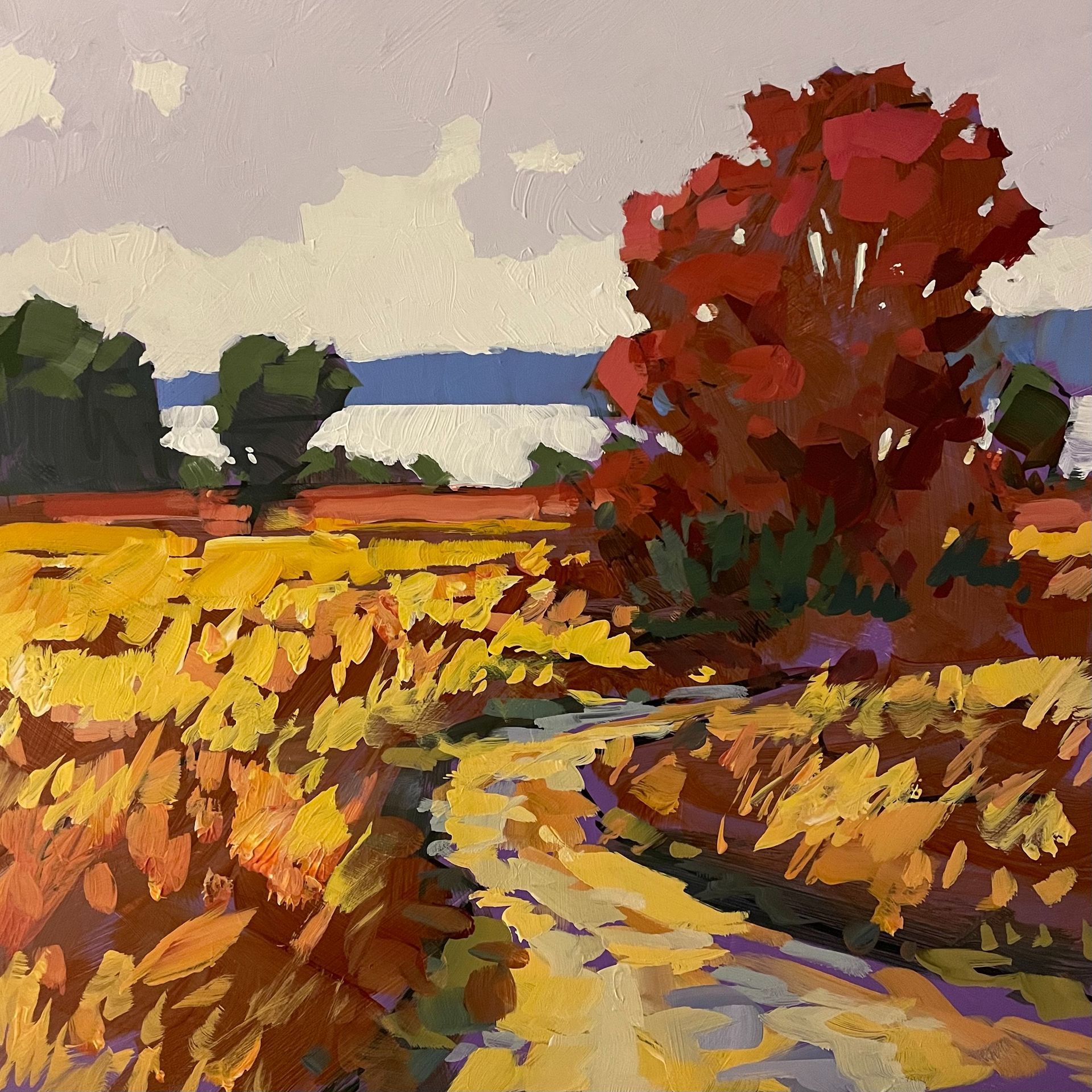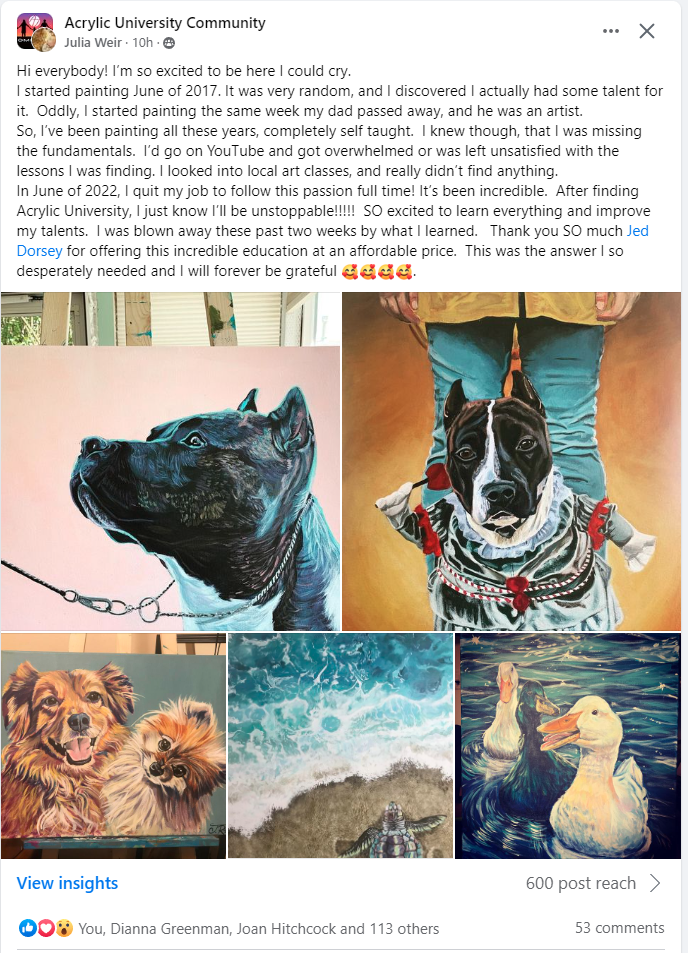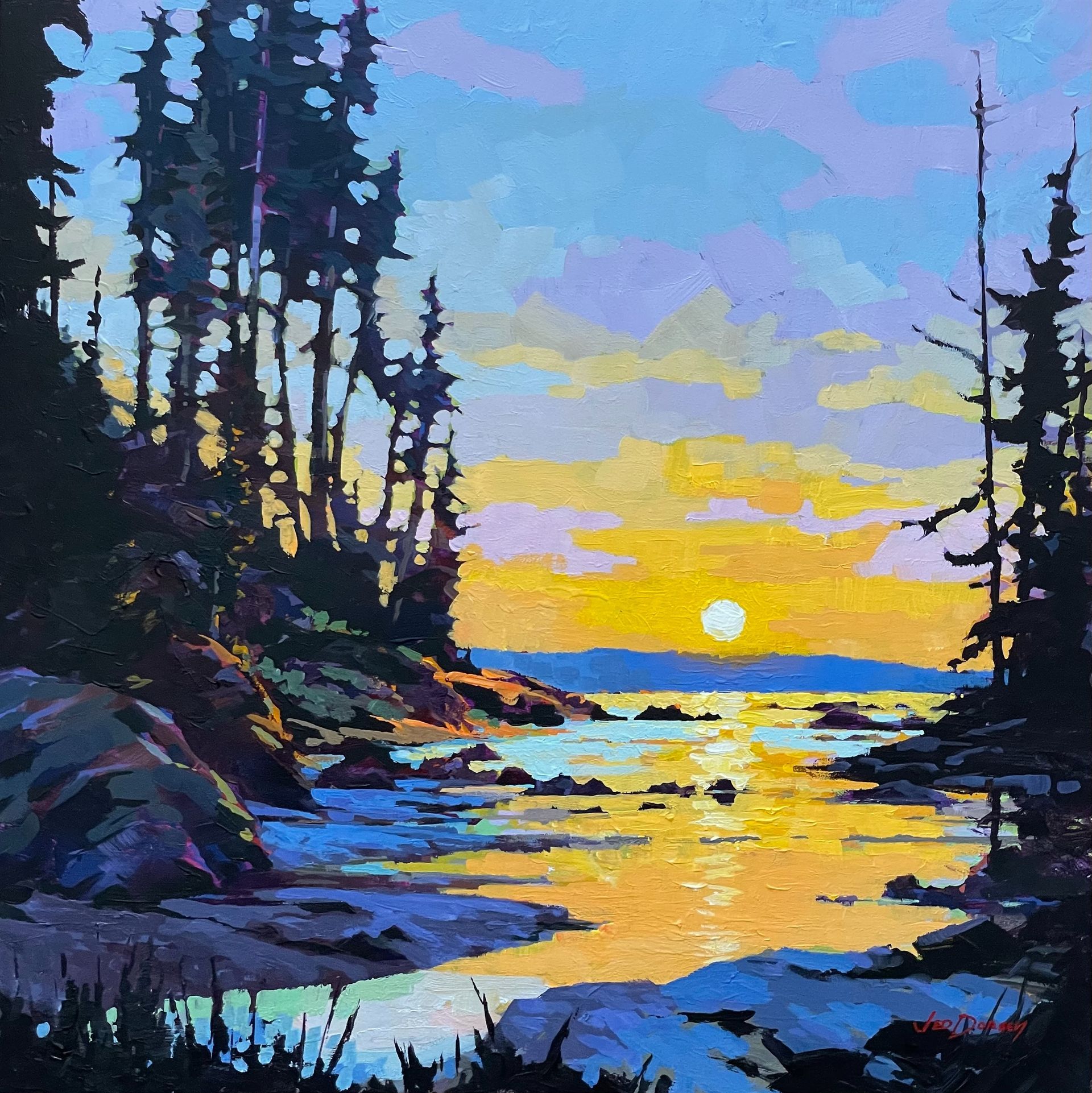"Know the rules before you break them." Interview With Jed Dorsey
"It's helpful to know the rules before you break them, and sketching your design can be beneficial in the planning process."
During one of our masterclasses, viewers were given the opportunity to ask Jed ANY question they wanted. He answered over 50 questions live during that session and we've written out some of the highlights for you below.
We've also gone through and added some background info to the questions that only made sense in a Masterclass context. Enjoy!
My yellows and oranges are dull and not opaque enough. Am I using the wrong paint?
Yes, you are probably using student-grade paint. You need professional-grade paint, especially for yellow and orange, as they're not great in student-grade paints.
How do you know how or why to change colors like the sky and trees?
It's about exaggeration. If I see a color and think it could be improved, I'll experiment. Our upcoming session on freedom with color will be helpful for this.
Can you use a brighter color as a base coat?
Yes, you can use any color as a base coat. I chose gray because it's neutral, but you can choose any other color.
Is the paint used heavy-bodied?
Yes, this is heavy-bodied professional acrylic paint.
How do you use bold colors but keep the painting from looking childish?
It's all about using gray. Mixing grayish colors with bold colors helps create a more mature look.
What constitutes each brush stroke?
CONTEXT: During our Masterclass, we challenged people to complete a painting using ONLY 50 brushstrokes. This viewer is asking what counts as a brushstroke.
It depends on the style and technique you're using. For a limited brush stroke, I would try to cover as much ground as possible in
one stroke while maintaining the drawing.
How do you clean your brush between colors?
I have two water buckets for cleaning, one for dirty and another for a second wash. I dry my brush off with paper towels in
between.
For a new artist who finds all three of these methods challenging, which do you recommend using first?
CONTEXT: During the 2nd session of our Masterclass we help people paint LOOSE and BOLD by challenging them to either a) Set a 30 minute timer and stop painting when it goes off B) Complete a painting in 50 brushstrokes or C) Use the BIGGEST brush they own.
I would try painting fast (30 minute time) first, then move on to the other methods.
Do you paint on a flat surface or on an easel?
I paint on a slightly tilted surface, but I also have an easel attached to the wall that is totally vertical.
Do you do thumbnail studies or pre-sketches before a 30-minute painting?
You can if you want. It can help with painting confidently since you'll know where you're going.
How would you preserve a finished work?
You can use gloss medium and varnish or spray varnishes.
What is acrylic modeling paste used for?
Acrylic modeling paste is used to create texture, often used under a painting or mixed with paint for more textured brush
strokes.
What do you do with leftover paint?
If I have enough, I'll mix it into a gray and use it later as gray paint.
Could you name some artists that have influenced you?
Some artists that have influenced me include Mike Svob, Robert Genn, Ovannes Berberian, John Michael Carter, Carolyn
Anderson, and John Poon. I've also been inspired by historical artists like Sergey Bongart and John Singer Sargent.
How can I learn to see blocks of color instead of details?
To see blocks of color instead of details, one easy way is to make your photos blurry. Most computer software can do that, or you can upload the image to Canva.com and make it blurry there. There are also other software tools that can simplify an image for you, reducing the number of values. Don't be afraid to use technology to help you out in this process. For example, you can also turn your painting grayscale to see the values better.
What is one trick to making the eye move around from the foreground and in this painting?
There are many ways of designing a painting, and it's hard to give a specific answer without more context. However, you can create a path to lead someone into the painting and then have something further back that draws their attention. This can be achieved through various design templates, like an L-shape, a circle, or an S-shape. The key is to create a visual path for the viewer to follow.
What gray paint did you use for the underpainting?
I used a student grade Utrecht neutral gray. It's just a simple mixture of carbon black, red, yellow, and white.
I'm a brand new artist. What is gesso?
Gesso is essentially a primer for your painting surface, but most of the time, you don't need to worry about it too much. Most store-bought canvases or gesso boards come with multiple layers of gesso already applied. It's important to use gesso if you're painting on an unprimed surface like MDF to seal it and prepare it for painting.
Can I mix white and black to make the gray base canvas?
Absolutely, you can mix white and black to create your own gray for the base canvas.
Do you sketch out your design before painting?
We have a running joke at Acrylic University that I don't always sketch out my design beforehand, but we do recommend it. It's helpful to know the rules before you break them, and sketching your design can be beneficial in the planning process.
Can I use Canson paper for homework?
Yes, you can absolutely use Canson paper for your homework assignments.
These were just a few of the many questions answered during this session. For more information and to learn about acrylic painting, check out our home page.





